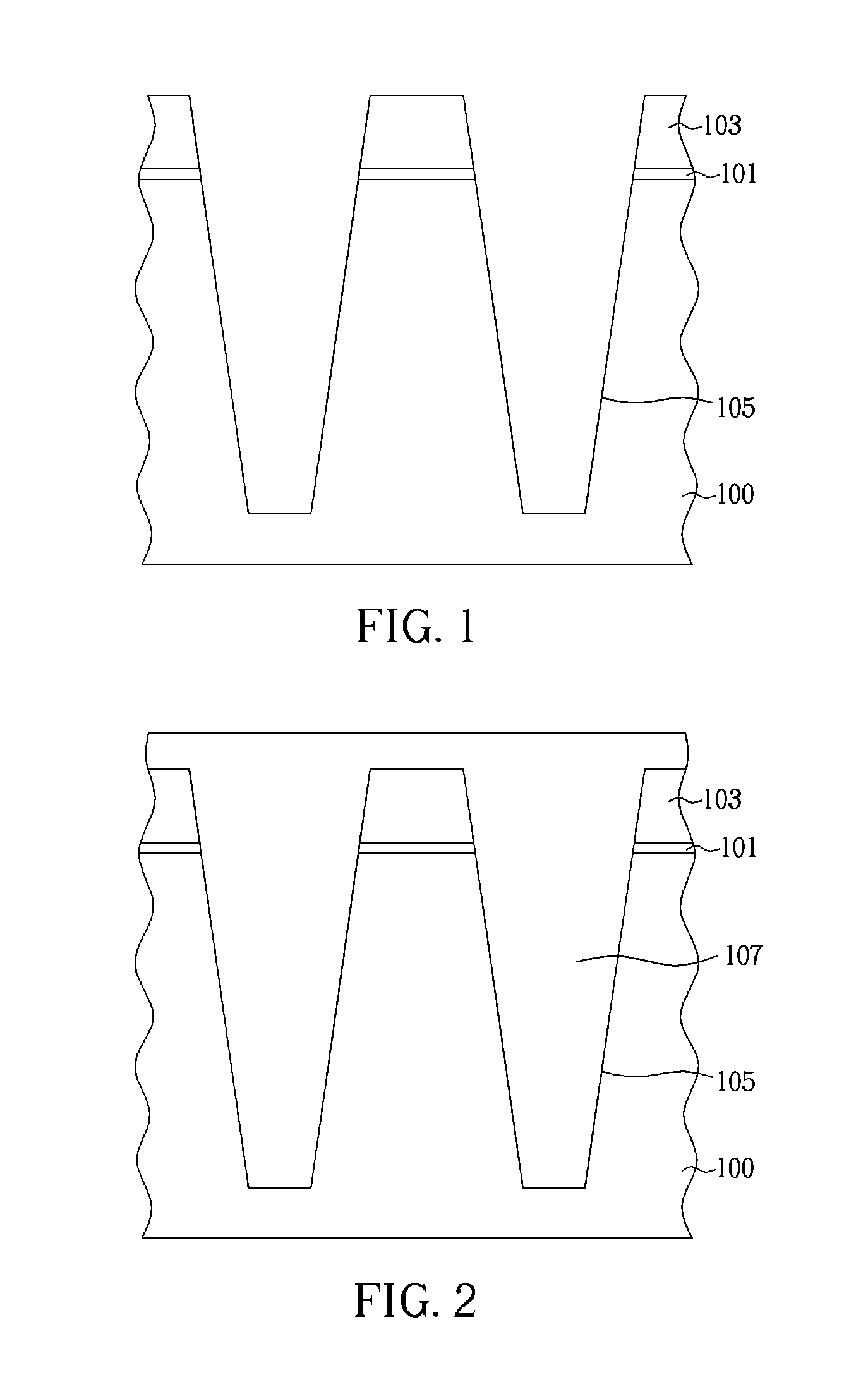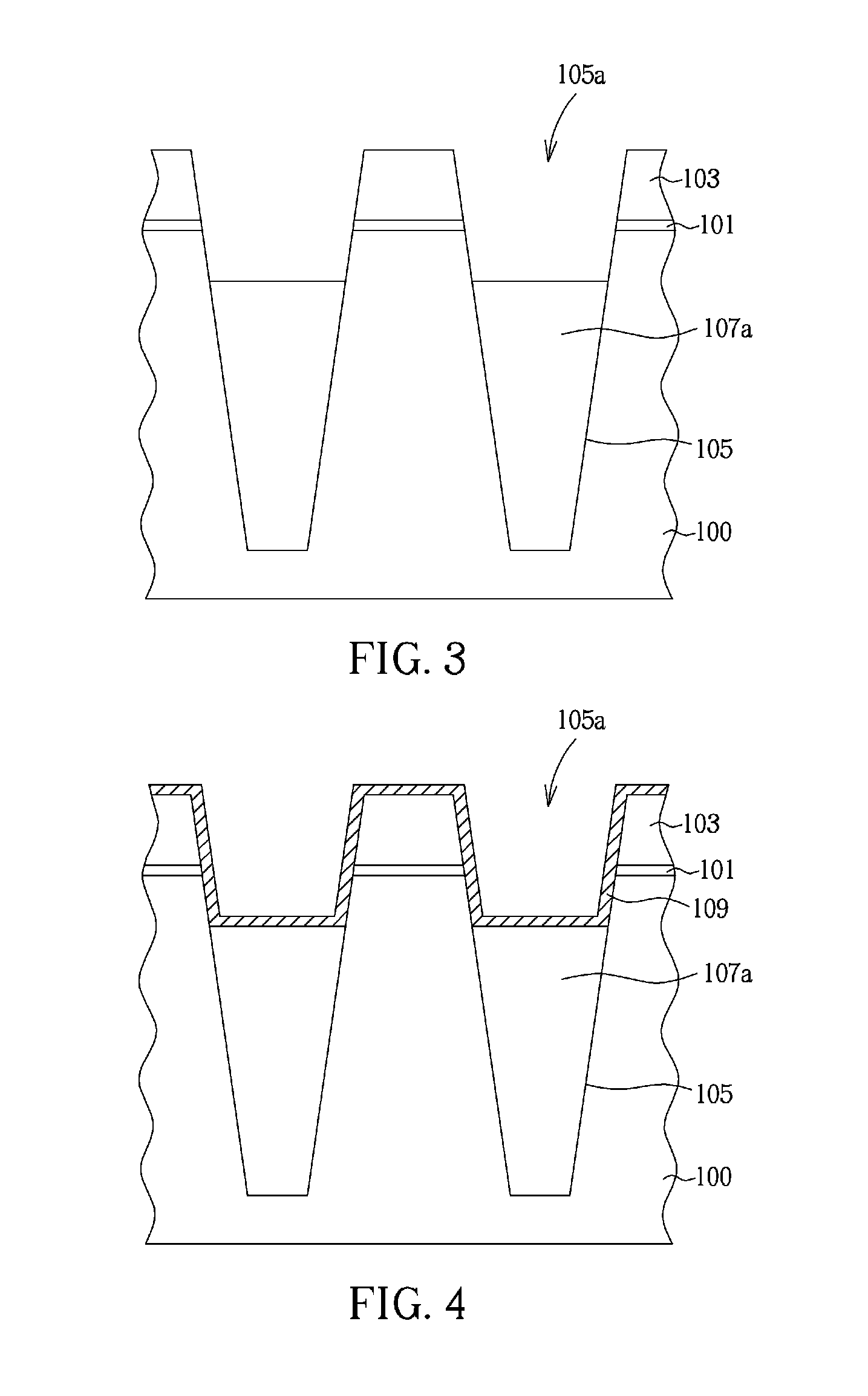Two-portion shallow-trench isolation
a shallow trench and two-portion technology, applied in the direction of basic electric elements, electrical equipment, semiconductor devices, etc., can solve the problems of increasing the aspect ratio of gaps, increasing the difficulty of filling gaps without leaving voids, etc., and achieve excellent gap-filling ability and increase the aspect ratio
- Summary
- Abstract
- Description
- Claims
- Application Information
AI Technical Summary
Benefits of technology
Problems solved by technology
Method used
Image
Examples
second embodiment
[0030]Please refer to FIGS. 8-10 which are cross-sectional views illustrating the process flow of manufacturing a shallow trench isolation structure in accordance with present invention. In this embodiment, the steam annealing process may be performed before the deposition of second insulating layer 111. As shown in FIG. 8, the steam annealing process is performed after the formation of buffer layer 109, so that the substrate 100 surrounding the first insulator 107a is oxidized and transformed into an insulating layer 113, and the buffer layer 109 is transformed into an oxide layer 109a. Subsequently, as shown in FIG. 9, a second insulating layer 115 is deposited on the oxide layer 109a and in the recess. This process is similar to the step shown in FIG. 6. The difference between the present embodiment and previous embodiment is that, in present embodiment, since the steam annealing is performed before the deposition of the second insulating layer 115, the second insulating layer 11...
third embodiment
[0032]Please refer now to FIG. 11-12 which are cross-sectional views illustrating the process flow for manufacturing a shallow trench isolation structure in accordance with the present invention. In this embodiment, the buffer layer 109 functions as a pure blocking layer which is not oxidized by the steam annealing process. The material of buffer layer 109 may be selected from silicon nitride (SiN) or silicon carbonitride (SiCN). After the buffer layer 109 is formed, as shown in FIG. 11, a selective etching process is first performed to remove a part of the buffer layer 109 on the top surface of the first insulator 107a, thereby forming a spacer 109c structure on the mask layer 103 and the substrate 100. Subsequently, as shown in FIG. 12, the same FCVD process is performed to fill a second insulating layer 111 in the recess 105a. The material of second insulating layer 111 may be silicon oxide type dielectric. A steam annealing process is then performed to transform the substrate 10...
PUM
 Login to View More
Login to View More Abstract
Description
Claims
Application Information
 Login to View More
Login to View More - R&D
- Intellectual Property
- Life Sciences
- Materials
- Tech Scout
- Unparalleled Data Quality
- Higher Quality Content
- 60% Fewer Hallucinations
Browse by: Latest US Patents, China's latest patents, Technical Efficacy Thesaurus, Application Domain, Technology Topic, Popular Technical Reports.
© 2025 PatSnap. All rights reserved.Legal|Privacy policy|Modern Slavery Act Transparency Statement|Sitemap|About US| Contact US: help@patsnap.com



